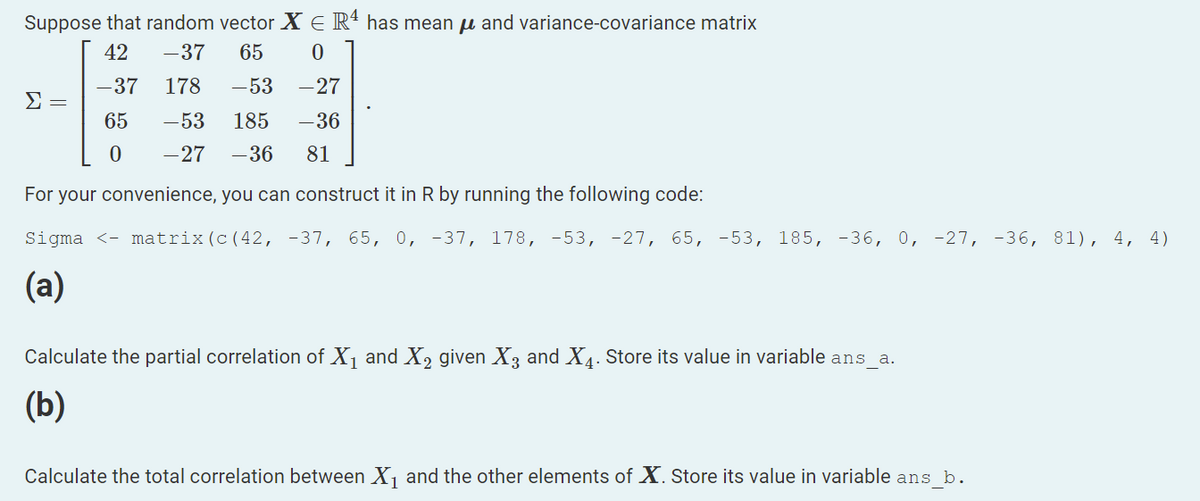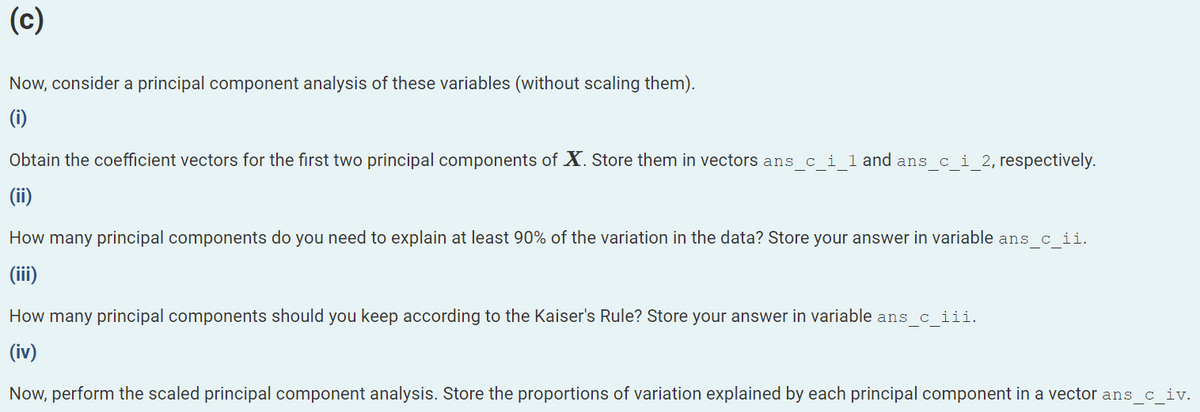-27 -36 81 onstruct it in R. 37, 65, 0,
Linear Algebra: A Modern Introduction
4th Edition
ISBN:9781285463247
Author:David Poole
Publisher:David Poole
Chapter3: Matrices
Section3.7: Applications
Problem 14EQ
Related questions
Question
7

Transcribed Image Text:Suppose that random vector X E R' has mean u and variance-covariance matrix
42
-37
65
-37
178
-53
-27
Σ
65
-53
185
-36
-27
-36
81
For your convenience, you can construct it in R by running the following code:
Sigma <- matrix(c(42, -37, 65, 0, -37, 178, -53, -27, 65, -53, 185, -36, 0, -27, -36, 81), 4, 4)
(a)
Calculate the partial correlation of X1 and X, given X3 and X4. Store its value in variable ans_a.
(b)
Calculate the total correlation between X1 and the other elements of X. Store its value in variable ans b.

Transcribed Image Text:(c)
Now, consider a principal component analysis of these variables (without scaling them).
(i)
Obtain the coefficient vectors for the first two principal components of X. Store them in vectors ans c i 1 and ans c i 2, respectively.
(ii)
How many principal components do you need to explain at least 90% of the variation in the data? Store your answer in variable ans c ii.
(iii)
How many principal components should you keep according to the Kaiser's Rule? Store your answer in variable ans_c_iii.
(iv)
Now, perform the scaled principal component analysis. Store the proportions of variation explained by each principal component in a vector ans_c_iv.
Expert Solution
This question has been solved!
Explore an expertly crafted, step-by-step solution for a thorough understanding of key concepts.
Step by step
Solved in 3 steps

Recommended textbooks for you

Linear Algebra: A Modern Introduction
Algebra
ISBN:
9781285463247
Author:
David Poole
Publisher:
Cengage Learning

Linear Algebra: A Modern Introduction
Algebra
ISBN:
9781285463247
Author:
David Poole
Publisher:
Cengage Learning